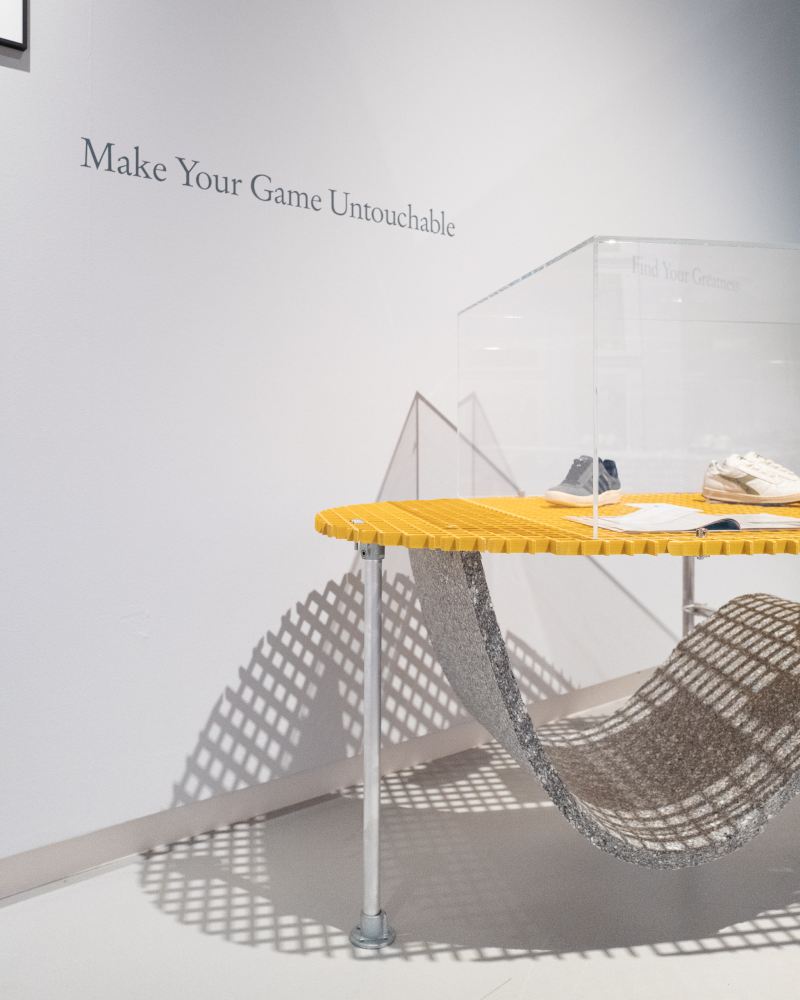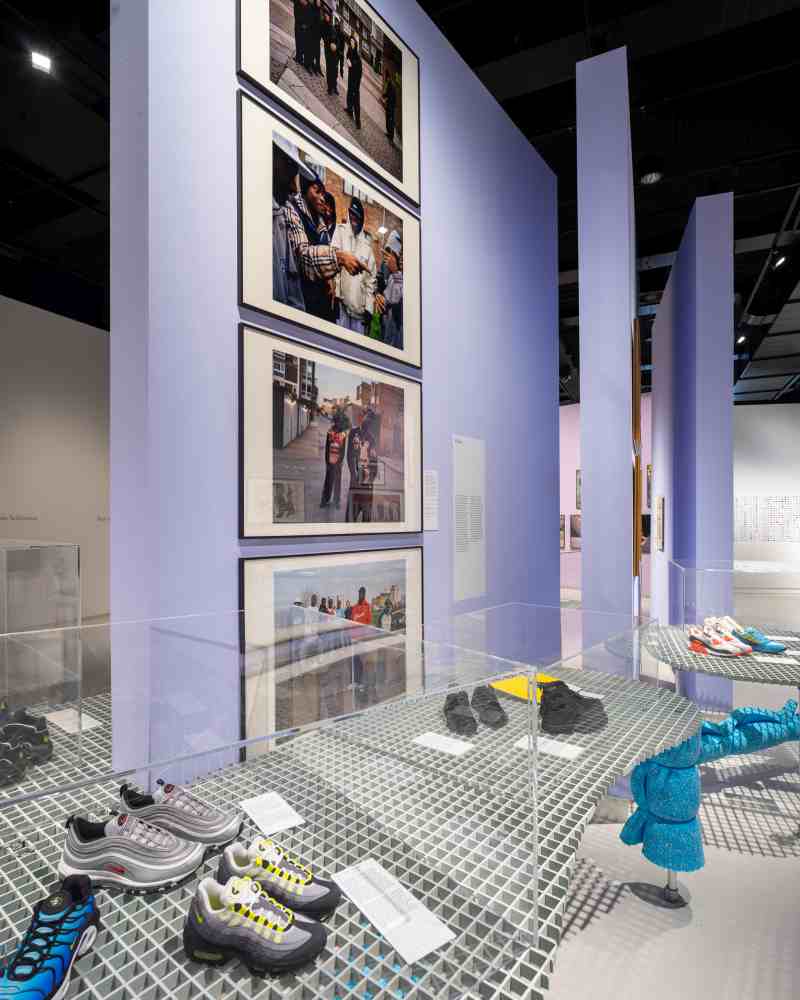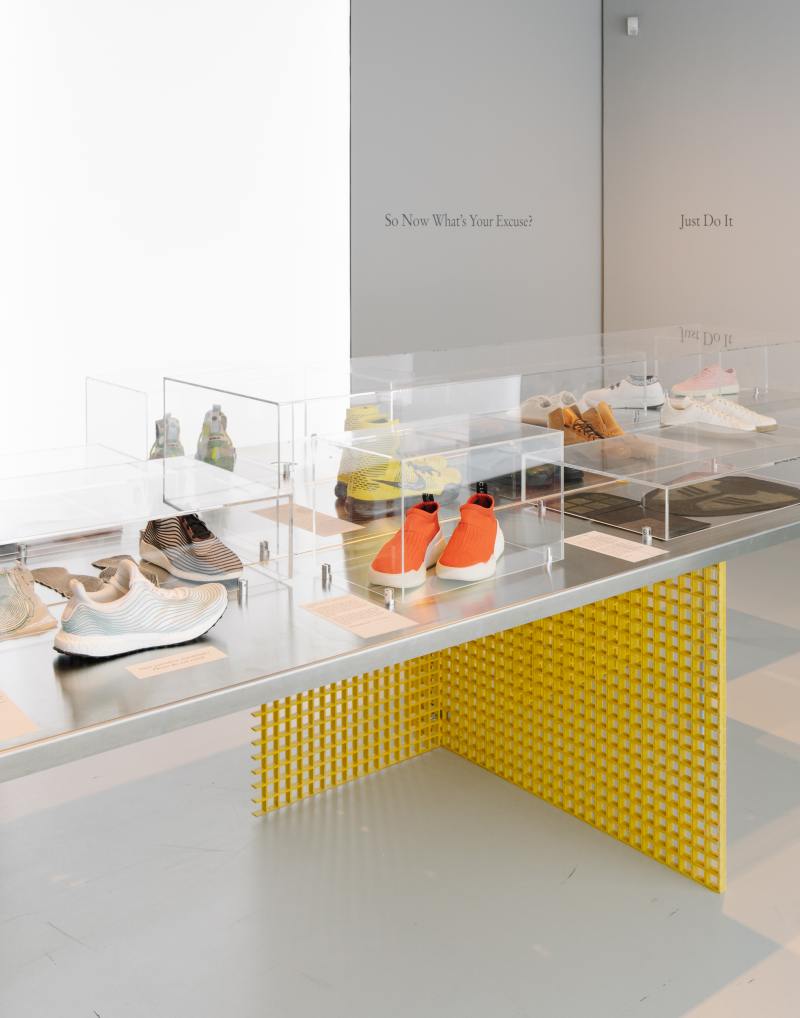The exhibition design for Sneakers Unboxed was created by Koehorst in ‘t Veld, a design agency specialised in exhibitions. They design books, exhibitions, concepts and research for museums, publishers and other institutions.
Normally, Jannetje in ‘t Veld and Toon Koehorst are also involved in the layout of the exhibition itself. This time, the concept was already determined during the Sneakers Unboxed exhibition at The Design Museum in London. Jannetje and Toon soon discovered a clear structure, Toon explains: “As soon as a visitor enters the exhibition, he or she starts with the design history, followed by the subcultures and technological developments. The big line we saw is how market-driven the sneaker is. It’s a mass product, but because of that, for 150 euros, or even less, you can buy a cutting edge design object with the most modern techniques such as weaving and 3D printing. At the same time, it’s also super high fashion, you can buy shoes from famous designers and still pay that 150 euros. Of course, there are always exceptions, but this idea has always appealed to us. So we wanted to make this more central in the exhibition.”

The market-driven nature of the sneakers has therefore been clearly portrayed by Koehorst in ‘t Veld in the exhibition design. “Around the exhibition space, we use slogans from advertising campaigns of sneaker brands. In this way, the visitor is constantly brought back to the idea that this is a billion-dollar industry in which everything, such as styles and techniques, is used to make the product.”

Every space has its own identity
The exhibition is divided into five chapters: Introduction, Style, Tipping Point, Performance and Sustainability. “For us, the question was how to translate these five chapters into five spaces, each with its own identity. At the same time, these chapters are like a family and all parts of the story belong together. To achieve that sense of difference and belonging, we let the material from one room come back in a different way in another room, and we used the same typography everywhere.”
The material and shapes in the exhibition were chosen very deliberately. “We wanted to stay as close to the shoe as possible. This can be seen in the non-natural materials, such as plastic, metal and foam. The latter material adds something soft, just like cushioning in the sneaker itself. The shapes are organic and also have something dynamic, since there is no straight line in the sneaker itself. The material and shapes react to the sneaker, giving it its own identity and really distinguishing it from other exhibitions. We wanted to stay far away from the idea of a shoe shop, it had to remain museum-like. That’s why we made all text signs extra museum-like by using a very classical font. By doing so, we want to continuously confirm the context in which the visitor finds himself.”
Fear of sneaker fatigue
Above all, the exhibition shouldn’t have the appearance of a shoe shop, but there was another challenge to overcome. “The biggest difficulty for us was that the exhibition consisted of 400 pairs of sneakers that were all the same size. Normally, you alternate between large and small objects, with which you can create a certain hierarchy. Some objects are immediately eye-catching, while others only become visible later on. Now, there are 400 pairs of shoes of the same size, and as a visitor you cannot immediately see from a distance which ones are really special to them. That’s why we worked with tables and pedestals of different heights to distinguish all sneakers. What we were afraid of is that people would suffer from sneaker fatigue. That visitors would finish after 100 shoes and leave without seeing the others. That was our biggest challenge.”

New Nike ISPA sneakers
For this exhibition, the designers have immersed themselves in the stories, shapes and colours of sneakers, but do they actually love this iconic shoe? Jannetje: “I think everyone has a pair of sneakers in his or her closet. I like them from a practical point of view, but the material also appeals to me.” Toon: “We’re not collectors, but I think sneakers are really cool. They give such a clear picture of time. It’s fashion, but it’s also so close to technology. That is why I find the big brands like Nike and Adidas interesting, they are constantly developing new shoes in this day and age. The exhibition was also a good reason for me to buy new shoes: beautiful Nike ISPA sneakers, which make me very happy.
